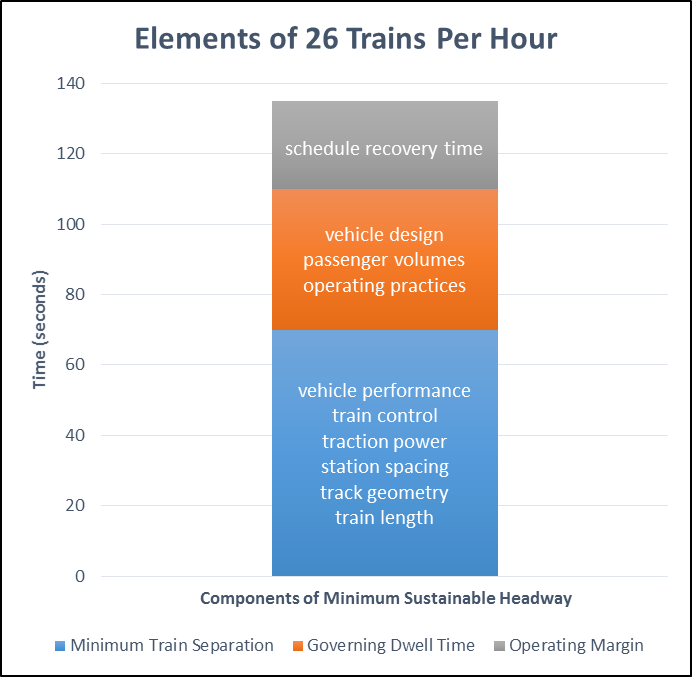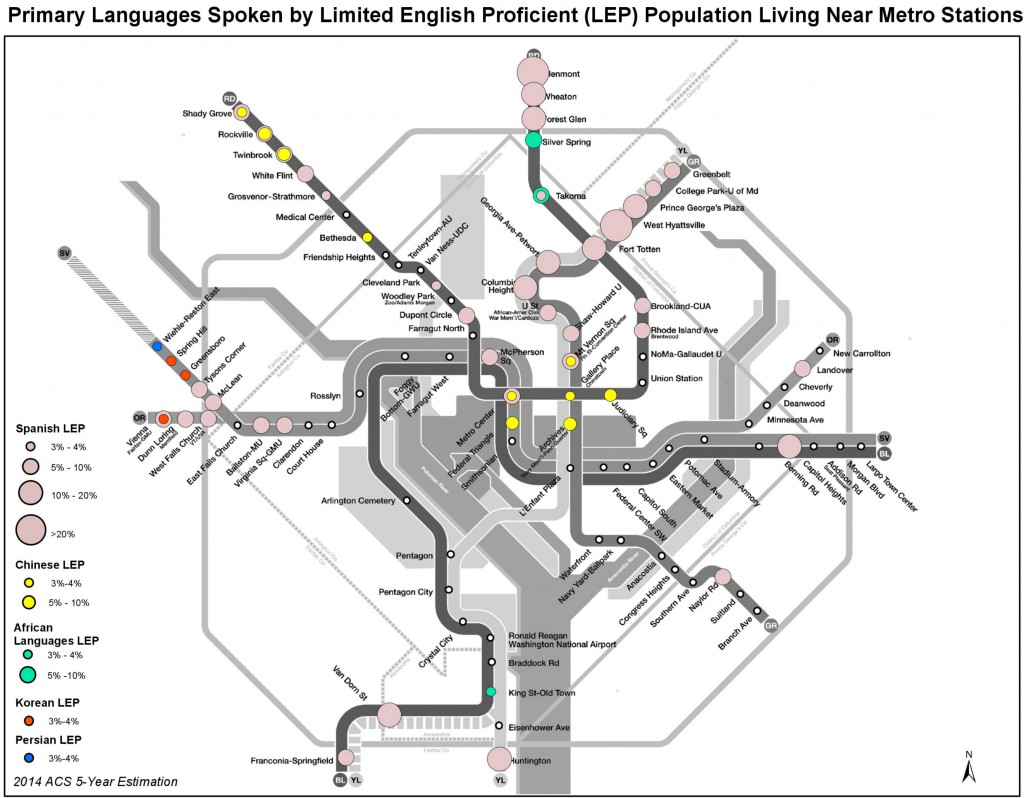Why can’t Metrorail reliably operate more than 26 trains per hour per direction? A 2001 study defined the basis for determining this constraint.
Although it has been known for years, the July 2014 opening of the Silver Line and corresponding reduction of rush hour Blue Line service highlighted that Metro cannot schedule more than 26 trains per hour (or a train every 2-2.5 minutes) across any point in its rail network. Though it’s been discussed many times through the years, let’s explain this limit in detail now.

Read more…
With a wide variety of languages spoken in our region, Metro uses the latest Census data to inform how we reach out to the diverse communities we serve.
Federal Transit Administration (FTA) guidance to transit agencies on meeting the needs of limited English proficient (LEP) populations – i.e., those who have a limited ability to read, write, speak, or understand English – says that the agency should provide written translation of vital documents for “each eligible language group that constitutes 5 percent or 1,000 persons, whichever is less, of the total population of persons ‘eligible to be served’.” For a region like ours, that’s a pretty tall order as there are more than 26 non-English language groups where there are more than 1,000 speakers of the language. However, by aggregating the latest Census-based language data for areas near our Metrorail stations and bus routes, we can develop a better understanding of the linguistic diversity in Metro’s service area as well as the proportion of LEP persons.
To ensure rider communication and meaningful public outreach to these language populations, Metro develops a Language Assistance Plan that is updated every three years, with the next update due in 2017. The Census language data developed for this document guides the types of information we need to translate and helps inform our public outreach activities. This latest round of language data shows that the top seven languages spoken in our service area are Spanish, Korean, Vietnamese, Chinese, French, Arabic and Amharic. For these languages, we provide written translations of all vital materials and offer language assistance services upon request. The map below shows the predominant LEP populations near each Metrorail Station along with the proportion of LEP speakers for each language.

Read more…
A new tool helps estimate ridership and revenue from transit-oriented development projects near Metrorail stations. Download it for yourself!

For months we have been detailing our work that quantifies the relationship between land use and rail ridership. This is important because Metrorail has been experiencing large changes in ridership, and we were interesting interested in understanding why certain station areas – like Navy Yard and NoMa – were showing ridership gains while the system as a whole is experiencing losses in the long arc of ridership growth.
To get to the bottom of this, we worked with researchers from the University of Maryland’s National Center for Smart Growth to analyze how walk ridership at a Metrorail station relates to its surrounding land uses, and create a tool that accurately estimates the likely change in ridership from changes in land uses. This tool, the Station Walk Area Ridership Model (or S.W.A.R.M., for short), helps us estimate the potential impacts of land use changes – new households, new jobs (by type of employment!), and even changes in the station’s walkshed – on ridership and revenue to Metrorail. Read more…
If you are great with data and love cities and transit, we have a job for you.

We were excited to announce that a job listing for a Business Intelligence Analyst position within Planning’s Applied Planning Intelligence unit has just been posted. We are looking for a healthy overlap between a data scientist and a transit nerd. For the full job description, head over to the wmata.com/careers site, scroll down and click on View all jobs. A short description is posted below.
Currently a team of two, we work to convert Metro’s many data sources into information that can be used to inform plans, policies and procedures. Many of our projects have been featured here on PlanItMetro, including:
Read more…






Recent Comments